Asked By
costina89
0 points
N/A
Posted on - 09/03/2011

I know it's an acronym but don't know what it means and for what is used. Can you please tell me more?
I want to find more information about this hardware piece because I'm interested in buying one and I don't know anything about it.
I would be grateful for any help.
Thanks,
Costina.
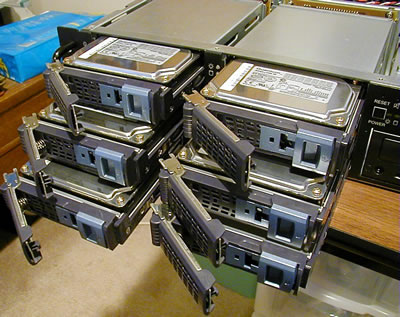
Need information about RAID and its uses

RAID provides increased storage functions and consists of combination of multiple disk drive components into logical unit where we can distribute the data across these drives in one of different ways that called RAID Levels and now we can use it as an umbrella terms for computer data storage schemes that can divide and replicate data among multiple physical disk drives.
The physical disks are in a RAID array, and the operating system can access these physical disks as one single disk.
The different schemes or architectures called RAID followed by a number like this ( RAID 0, RAID 1).
Each scheme provides a different balance between two key goals: increase data reliability and increase input or output performance
so we can find these standard levels of RAID in this table
|
Level |
Description |
Minimum # of disks |
Space Efficiency |
Fault Tolerance |
Array Failure Rate** |
Read Benefit |
Write Benefit |
Image |
|
RAID 0 |
Block-level striping without parity or mirroring. |
1 |
1 |
0 (none) |
1−(1−r)n |
nX |
nX |
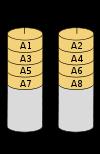 |
|
RAID 1 |
Mirroring without parity or striping. |
2 |
1/n |
n−1 disks |
rn |
nX |
1X |
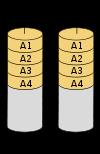 |
|
RAID 2 |
Bit-level striping with dedicated Hamming-code parity. |
3 |
1 − 1/n ⋅ log2(n-1) |
RAID 2 can recover from 1 disk failure or repair corrupt data or parity when a corrupted bit's corresponding data and parity are good. |
variable |
variable |
variable |
 |
|
RAID 3 |
Byte-level striping with dedicated parity. |
3 |
1 − 1/n |
1 disk |
n(n−1)r2 |
(n−1)X |
(n−1)X* |
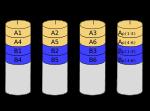 |
|
RAID 4 |
Block-level striping with dedicated parity. |
3 |
1 − 1/n |
1 disk |
n(n−1)r2 |
(n−1)X |
(n−1)X* |
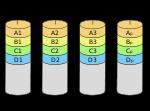 |
|
RAID 5 |
Block-level striping with distributed parity. |
3 |
1 − 1/n |
1 disk |
n(n−1)r2 |
(n−1)X* |
(n−1)X* |
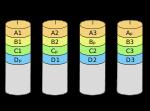 |
|
RAID 6 |
Block-level striping with double distributed parity. |
4 |
1 − 2/n |
2 disks |
n(n-1)(n-2)r3 |
(n−2)X* |
(n−2)X* |
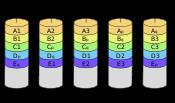 |
Hope these informations help you
Need information about RAID and its uses

Hi,
I know that you already know the acronym of RAID but for the sake of the reader, I'll post it here the acronym. It's stand for Redundant Array of Inexpensive Disks.
This consist of disk drives categorically divided to perform foul tolerance and performance. Used for servers frequently but not so used for personal used.
This will allow you numbers of data to store in different storage disk drives for overall performance.
RAID – has different kinds of devices. They are the following;
RAID 0, RAID 1, RAID 5, RAID 6 and RAID 10, also known as RAID 1+0. And each RAID has it's usage and purpose.
RAID 0 for example – Has 2 or more data striped but without fault tolerance. If the hard drive failed then the data is gone forever.
RAID 1. Gives you Disk Mirroring, means it read twice the transactions in a single disks and write transactions in a single disks.
RAID 2. More block level than a bit level, not implemented typically and it is rarely used.
RAID 3. Stripping in byte-level type used and dedicated for parity disk; can't provide service simultaneously.
RAID 4. Most common used and implemented amongst the RAID because this block level striping with disk parity. One hard drive failed then another hard drive replaces.
RAID 5. It gives excellent performance, also popular because of it's usage. Gives you data striping in bytes-level and it correct error.
RAID 6. It block-level striping and distributed to all disk using disk parity.
RAID 0 + 1 – RAID 1 is created atop of them, with 2 RAID 0 for stripes used for replicating, sharing data for both among disks.
RAID 10 – Not original RAID levels with multiple RAID 1 created for mirroring and RAID 0 stripe created among these.
RAID 7 – used for trademark for storage computer corporation, add to it are RAID 3 or 4.
RAID S – known as parity RAID is EMC proprietary corporation striped parity RAID used because of it's symmetrix storage system.





















